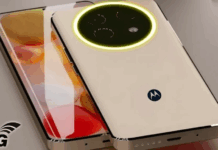
Bank Cheque– Today in this news we are going to tell you some important information related to bank cheque. Actually, let us tell you that carelessness done in haste with the check can cause loss. Therefore, it is important to act carefully… otherwise big trouble may arise.
Due to the encouragement given to digital payment, people are now using other payment options apart from cash on a large scale. These options also include transactions through bank cheques. If you want to transact through cheque, it is very important to take care of some things. Haste and carelessness with the check can lead to loss. Therefore, it is important to proceed with caution. Let us tell you which mistakes should be avoided while filling the cheque-
After filling the amount, do not put ‘- sign-
After entering the amount in words and figures in the cheque, it is very important to make ‘/-‘ sign behind it. While putting the amount in words, it is better to write ‘only’ before adding this sign. For example- Twenty Thousand only/- and 20000/-. This sign indicates that the amount you paid is limited to this amount. If ‘/-’ sign is not used then an opportunity is created for fraudsters to increase the amount.
Damage to MICR code-
There is a MICR (Magnetic Ink Character Recognition) code on the white strip at the bottom of the bank cheque. Whenever you use a cheque, take care that this MICR code does not get damaged in any way. This detail should not be damaged while signing the check or for any other reason. MICR code helps in faster processing and settlement of cheques.
Ignoring the date of cheque-
Bank check remains valid only for 3 months after the date written on it. That means it has to be deposited or withdrawn within this period. If you use the check after this period, the check will not be of use to you and you will have to suffer loss. Apart from this, keep this in mind when you make payment to someone through check at a later date.
If a mistake is made while putting the date on the cheque, it would be better to use another check instead of overwriting it. Even if there is a mistake in the date and other details, it is better to issue a new cheque.
Account Payee and Bearer Cheque-
If you want to make payment directly into someone’s bank account, then mention Account Payee on the cheque. This sign is made by writing A/C Payee between the double crossed lines on the left top corner of the cheque. With this sign, the check is paid directly into the bank account and cannot be encashed immediately.
Its biggest advantage is that in case of loss of cheque, a fraudster cannot take cash in return by pretending to be the target person. While paying the account, cross out the bearer written on the right side of the cheque. If you are giving the check for cashing then do not make Account Payee sign on the left top corner.
More space between words and figures-
Whenever you make payment to someone through cheque, avoid giving too much space between words and figures regarding name and amount. Excess space creates scope for tampering in names and amounts.
Apart from this, check that the amount which is written in words should also be in figures. Banks will accept the check only if the amount matches on both sides, otherwise the check will be rejected.
Paying more amount than the balance-
While making payment through bank cheque, first check the balance of your bank account. Only after this fill the cheque. If the amount is paid more than the balance then the check will bounce and penalty will be imposed. Check bounce penalty is up to Rs 500 plus GST in various banks. Therefore, definitely keep this in mind.
Not paying attention to signature-
Whenever you sign a bank cheque, remember that you have to sign exactly as it is already recorded in the records of the concerned bank branch. Many people keep different signatures for different banks. If you have also done this, then be careful while signing the bank cheque, otherwise your check may get rejected.
Do not keep check details with yourself-
Whenever you make payment to someone through bank cheque, make sure to note down the details of that check like check number, account name, amount and date. This information can be useful to you if you need to cancel the cheque.
Apart from this, you also get to know whether any check has been misplaced or whether someone has taken the check from the check book without your knowledge.





